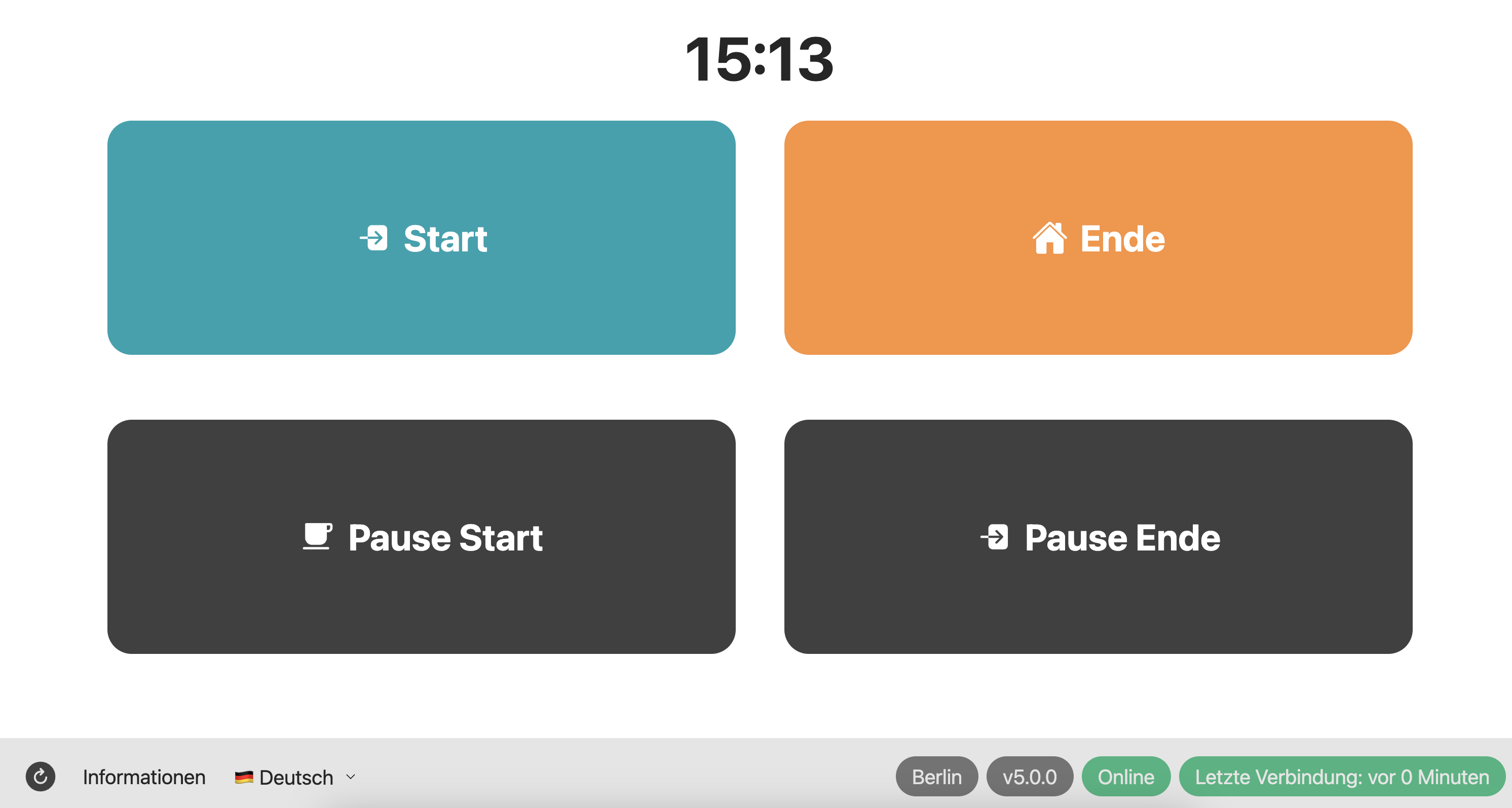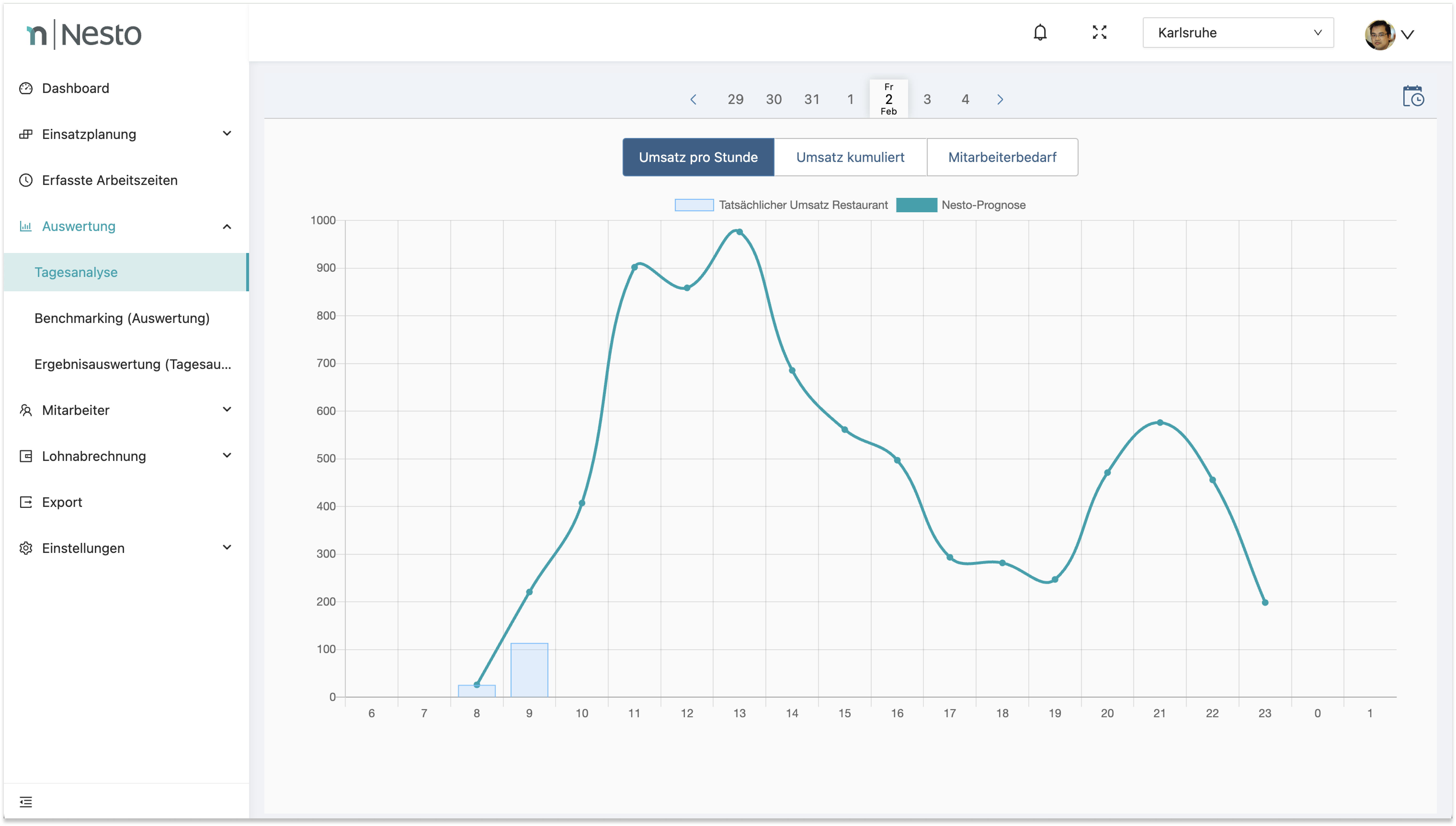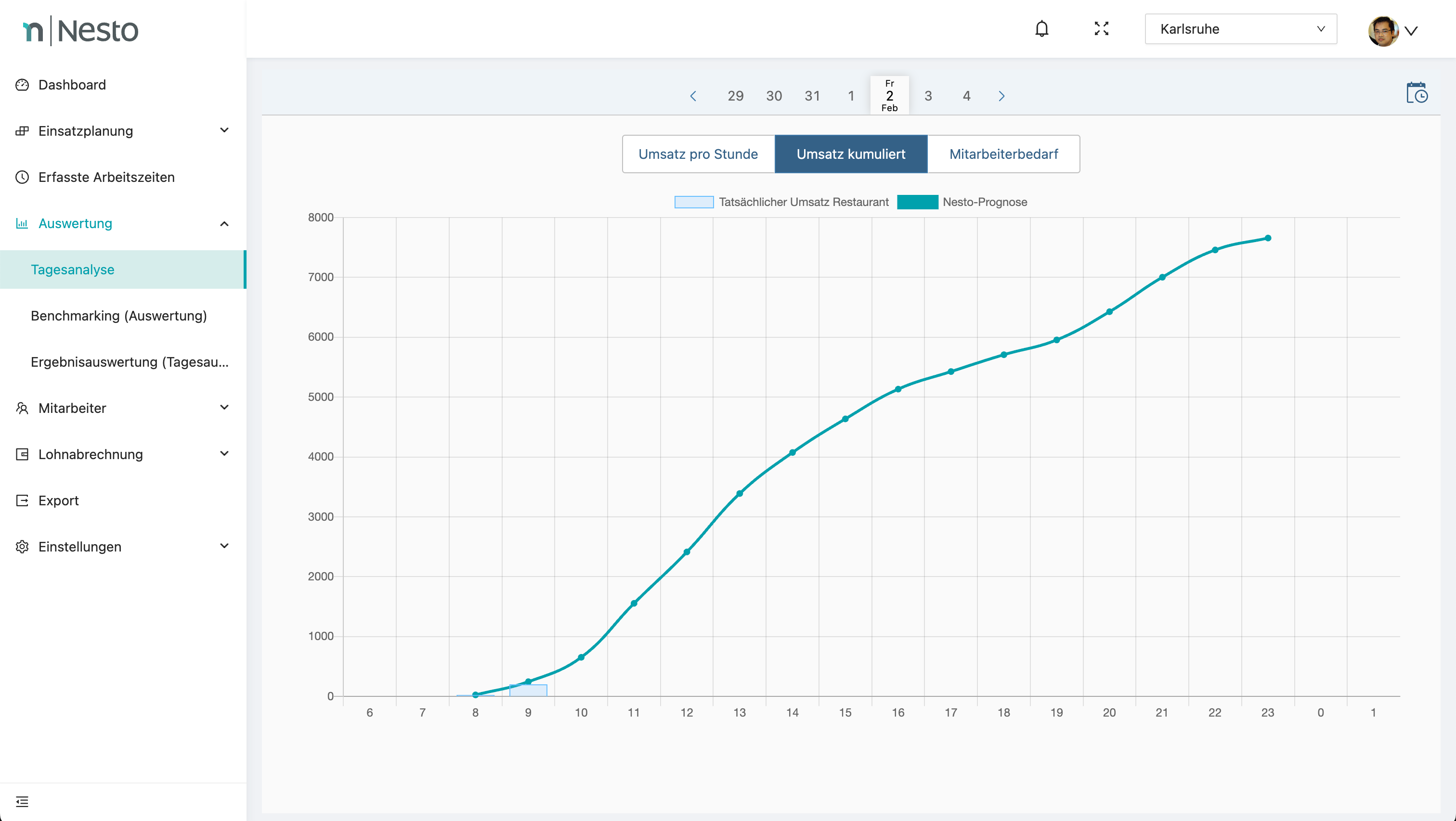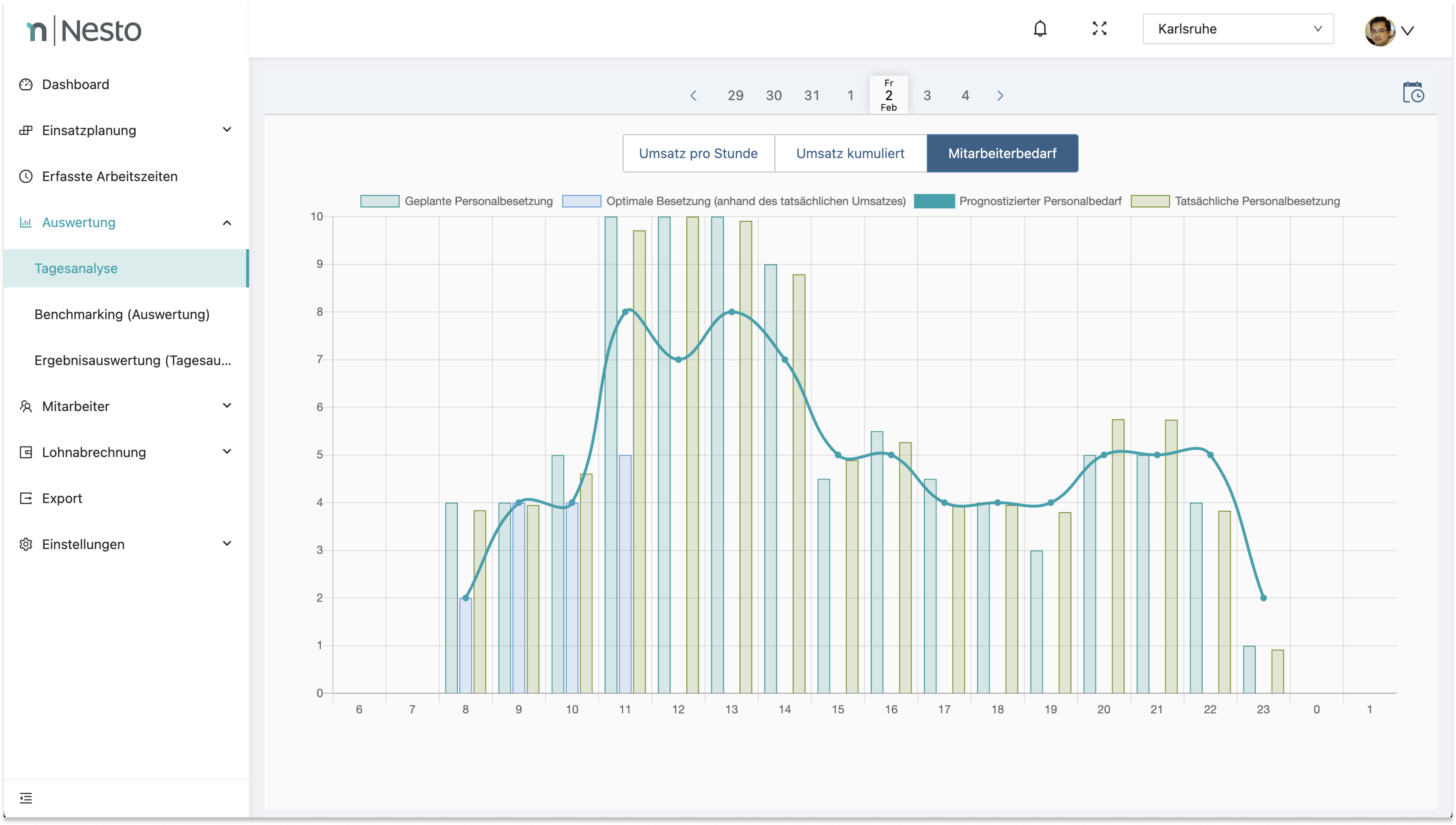Newsletter dated 09.09.2024
In our newsletter today, we would like to inform you about some important product updates and also show you the possibilities that the Tagesanalyse in Nesto offers, so that you always have the economic success of your operations in view.
Product Updates
QR Code for Registering New Time Tracking Devices
The QR code for registering new time tracking devices now leads to the new version of the Nesto time tracking:

The new version of the time tracking can be used both via the browser and can also be installed as an app on your time tracking devices. Compared to the old time tracking app, the new version has received a visual redesign and displays the time in digital format. In addition, the footer shows details about the location, including the name of the time tracking device, the connection status, and the last connection time.

If you want to permanently install the new version of the time tracking app as an app, please follow the instructions here: https://help-portal.nesto-software.de/help-portal/installation-der-browser-version
The Tagesanalyse in Nesto
The Tagesanalyse represents the core of daily controlling within Nesto (in addition, there are various exports, benchmarking, the daily evaluation, and our additional tool Nesto Analytics for cross-location analyses – but more on that at a later time). Today, we want to highlight the most important functions of these evaluation pages and also explain why the comparison of Mitarbeiterbedarf is a central component of successful controlling in Nesto.
Tagesanalyse: Hourly Sales
The Tagesanalyse consists of three views. The first view compares the hourly Nesto forecast with the respective hourly sales. This enables an hour-precise check of our forecast quality. The legend at the top indicates whether the forecast actually comes from Nesto or was overwritten by a store manager (this is marked with the words “angepasste Prognose”):

Tagesanalyse: Cumulative Sales
The second view shows the cumulative forecasts and sales for the respective business day. This allows a review of forecast quality on a daily basis and provides a first overview of the sales trend during the day:

Tagesanalyse: Mitarbeiterbedarf
The third view converts the sales via the MEO into the corresponding personnel requirements and compares them with the planned or recorded working hours. This enables a review of demand-oriented planning and work retrospectively for each individual day:

This view offers a variety of evaluation options that help to quickly identify and resolve operational and planning challenges. We distinguish between four KPIs in this view, which in combination can optimally support daily controlling:
Geplante Personalbesetzung: This is the number of employee hours per hour planned in the last released duty roster.
Optimale Besetzung (based on actual sales): This is the number of employee hours per hour that would have been optimal according to the MEO. For this, the actual hourly sales are converted with the MEO into personnel requirements per hour.
Prognostizierter Mitarbeiterbedarf: This is the number of employee hours per hour proposed based on the sales forecast and the existing MEO.
Tatsächliche Personalbesetzung: This is the number of clocked hours per hour.
For conducting daily controlling with a focus, the comparison of these KPIs is relevant. Depending on the comparison, different conclusions can be drawn:
Comparison of prognostizierter Mitarbeiterbedarf to geplante Personalbesetzung: If these values are very similar, it means that the staff was planned according to the forecasts provided by Nesto and thus followed demand-oriented planning.
Comparison of geplante Personalbesetzung to tatsächliche Personalbesetzung: If these values are very similar, the shift leader was able to implement the duty roster in practice.
Comparison of optimale Besetzung to prognostiziertem Mitarbeiterbedarf: If these values match, a very precise sales forecast by Nesto was present – both actual sales and sales forecast are converted by the MEO.
Comparison of optimale Besetzung, prognostizierter Mitarbeiterbedarf, and geplante Personalbesetzung: If there is a deviation between the first two values and the planned staffing, two interpretations are possible. On the one hand, it is of course possible that the store manager did not plan demand-oriented. However, if it can be assumed that the store manager planned “intuitively” demand-oriented, a deviation of both optimal staffing and forecasted demand from planned staffing indicates an incorrectly stored MEO. Here, it may be important to carefully review the MEO and minimum staffing again.
I hope this brief explanation has brought you closer to the important functions of the Tagesanalyse and I look forward to it supporting you in optimally controlling your operations!
Best regards,
Your Konstantin
Head of Customer Success at Nesto Software GmbH
